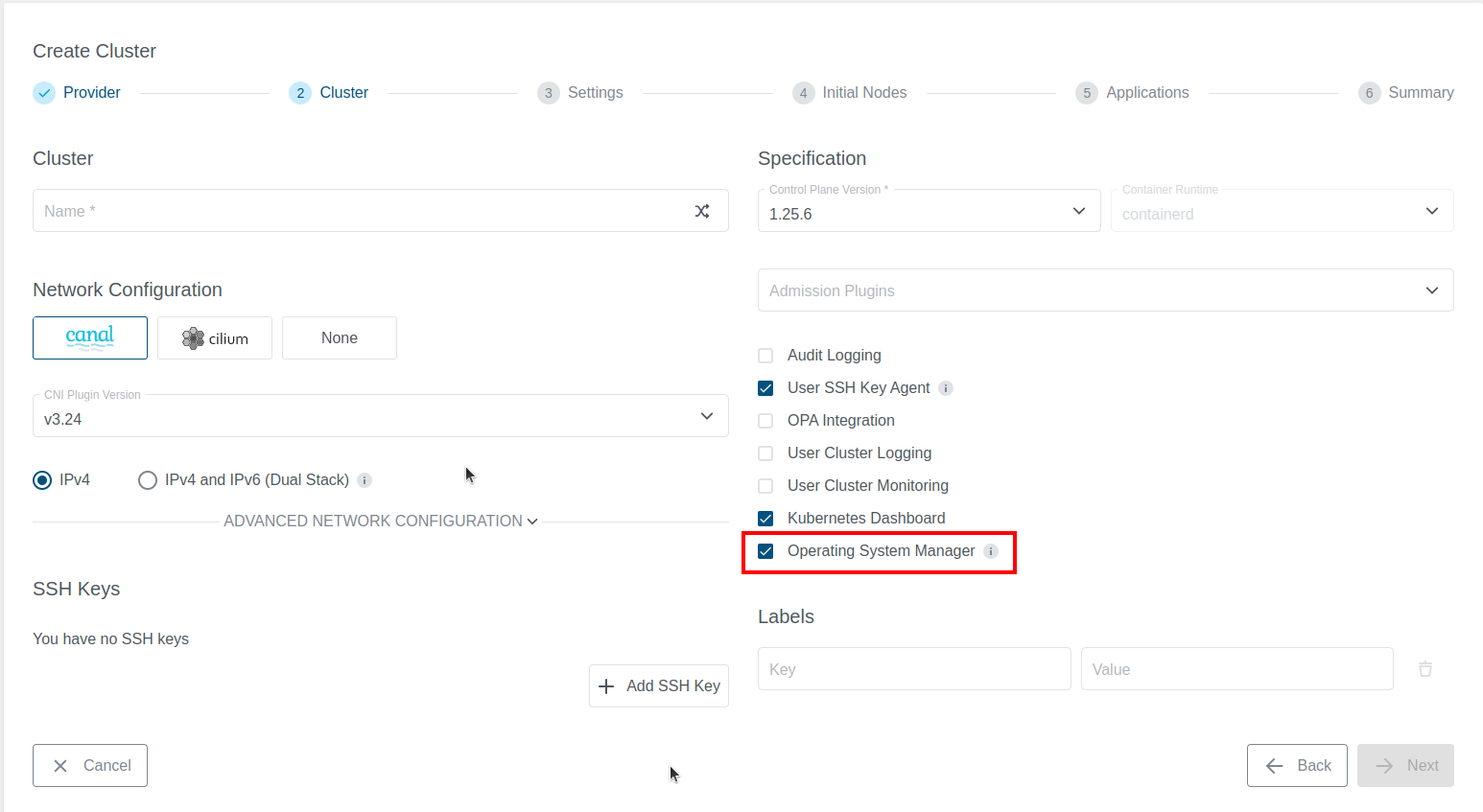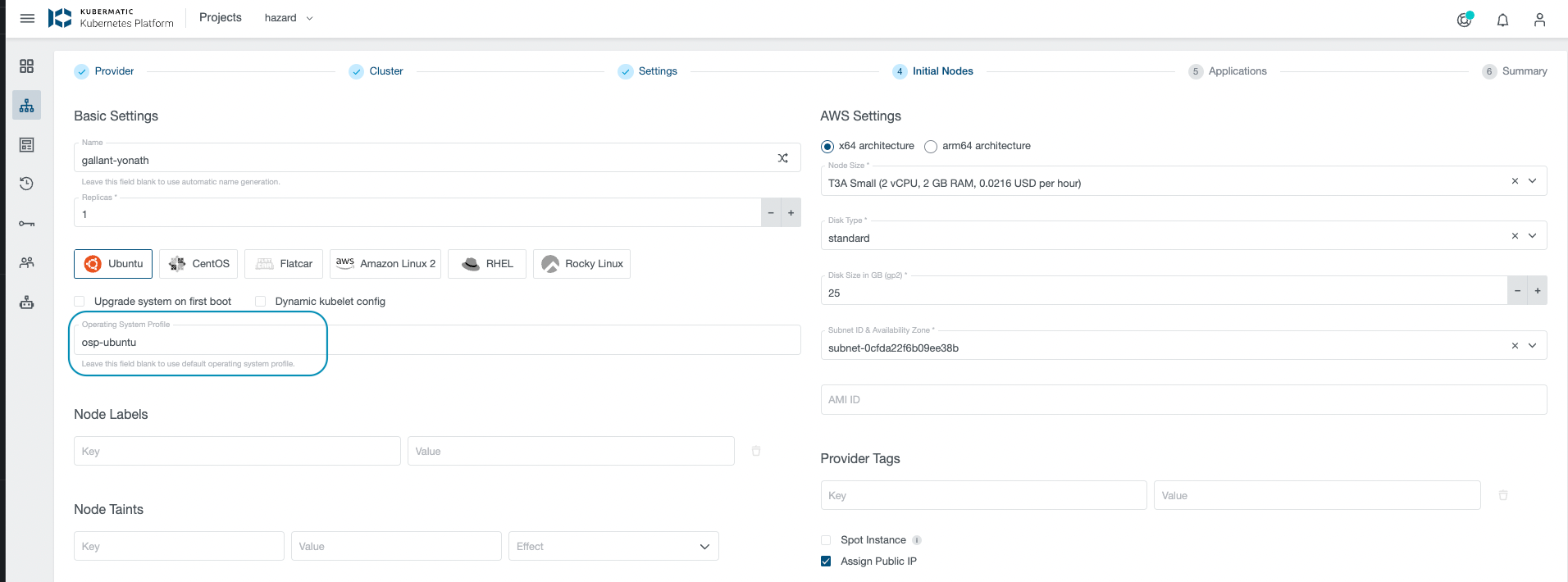Starting with KKP 2.21, OSM will be enabled by default for all the new user clusters. It is highly recommended to use OSM instead of user-data from machine-controller, which is consideread deprecated and will be removed in the near future.
OSM can be configured using the dashboard or CLI.
Via UI
Enable OSM
Create a new cluster from the dashboard and toggle Operating System Manager feature on.

OSM cannot be disabled after cluster creation.
Selecting OperatingSystemProfile

Via CLI
On cluster creation, set the following values in Cluster resource:
apiVersion: kubermatic.k8c.io/v1
kind: Cluster
metadata:
name: crh4xbxz5f
spec:
...
enableOperatingSystemManager: true
...
Custom OperatingSystemProfiles
To use custom OperatingSystemProfiles, users can do the following:
- Create their
CustomOperatingSystemProfileresource on the seed cluster in thekubermaticnamespace. These resources will be automatically synced to thekube-systemnamespace of the user-clusters.
apiVersion: operatingsystemmanager.k8c.io/v1alpha1
kind: CustomOperatingSystemProfile
metadata:
name: osp-install-curl
namespace: kubermatic
spec:
osName: "ubuntu"
osVersion: "20.04"
version: "v1.0.0"
supportedCloudProviders:
- name: "aws"
bootstrapConfig:
files:
- path: /opt/bin/bootstrap
permissions: 755
content:
inline:
encoding: b64
data: |
#!/bin/bash
apt update && apt install -y curl jq
- path: /etc/systemd/system/bootstrap.service
permissions: 644
content:
inline:
encoding: b64
data: |
[Install]
WantedBy=multi-user.target
[Unit]
Requires=network-online.target
After=network-online.target
[Service]
Type=oneshot
RemainAfterExit=true
ExecStart=/opt/bin/bootstrap
modules:
runcmd:
- systemctl restart bootstrap.service
provisioningConfig:
files:
- path: /opt/hello-world
permissions: 644
content:
inline:
encoding: b64
data: echo "hello world"
- Create
OperatingSystemProfileresources in thekube-systemnamespace of the user cluster, after cluster creation.
OSM uses a dedicated resource CustomOperatingSystemProfile in seed cluster. These CustomOperatingSystemProfiles are converted to OperatingSystemProfiles and then propagated to the user clusters.
Updating existing OperatingSystemProfiles
OSPs are immutable by design and any modifications to an existing OSP requires a version bump in .spec.version. Users can create custom OSPs in the seed namespace or in the user cluster and manage them.
KKP ships default OSPs for different operating systems and it is not recommended to update default OSPs. Since KKP manages those resources and will revert any changes made on them.
Migrating existing clusters
For migrating existing clusters, user can enable OSM using either the CLI or UI. That would enable OSM on the user cluster level. Although the machines will not be rotated automatically. To perform this rotation for existing MachineDeployments please follow the guide at Rolling Restart MachineDeploments.